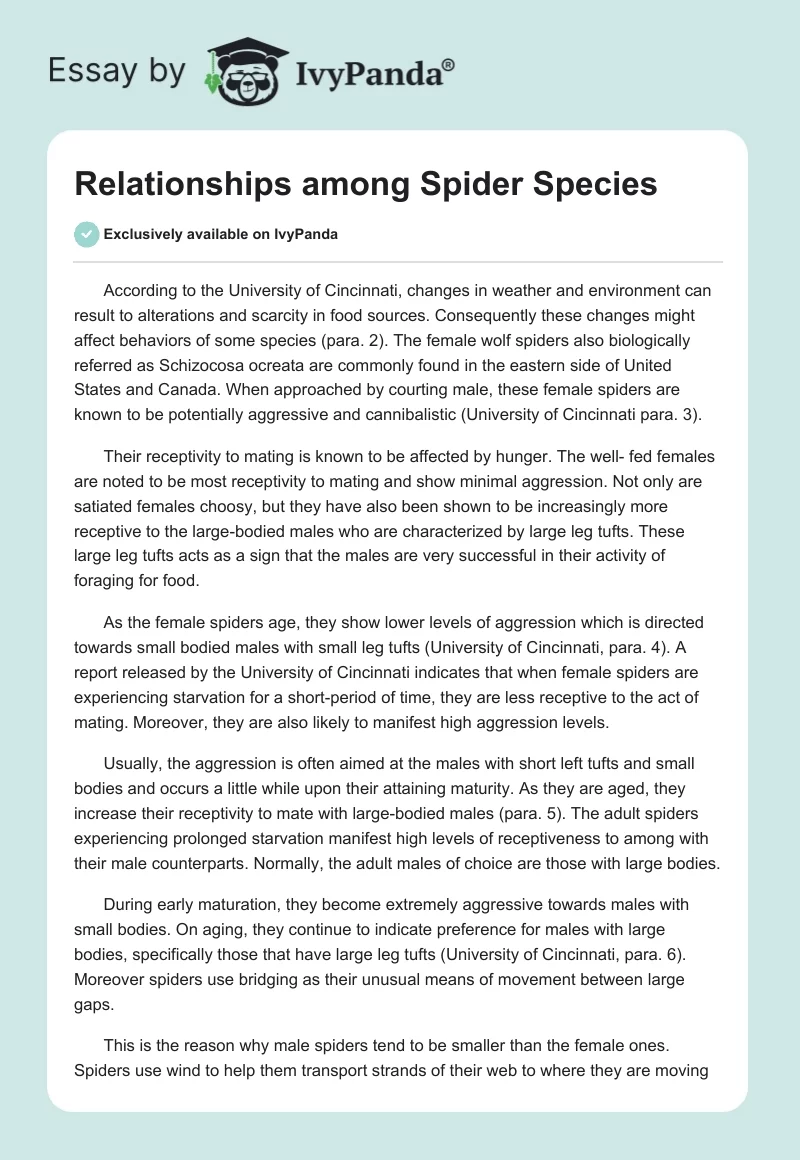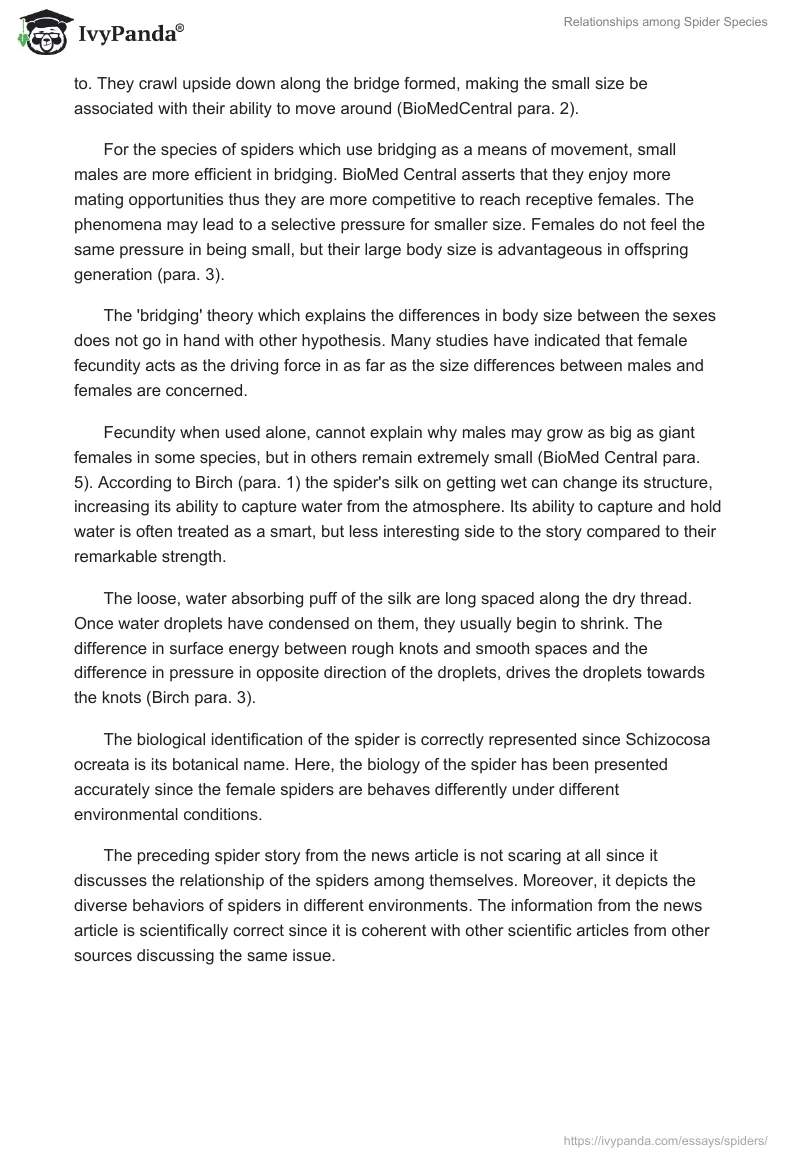According to the University of Cincinnati, changes in weather and environment can result to alterations and scarcity in food sources. Consequently these changes might affect behaviors of some species (para. 2). The female wolf spiders also biologically referred as Schizocosa ocreata are commonly found in the eastern side of United States and Canada. When approached by courting male, these female spiders are known to be potentially aggressive and cannibalistic (University of Cincinnati para. 3).
Their receptivity to mating is known to be affected by hunger. The well- fed females are noted to be most receptivity to mating and show minimal aggression. Not only are satiated females choosy, but they have also been shown to be increasingly more receptive to the large-bodied males who are characterized by large leg tufts. These large leg tufts acts as a sign that the males are very successful in their activity of foraging for food.
As the female spiders age, they show lower levels of aggression which is directed towards small bodied males with small leg tufts (University of Cincinnati, para. 4). A report released by the University of Cincinnati indicates that when female spiders are experiencing starvation for a short-period of time, they are less receptive to the act of mating. Moreover, they are also likely to manifest high aggression levels.
Usually, the aggression is often aimed at the males with short left tufts and small bodies and occurs a little while upon their attaining maturity. As they are aged, they increase their receptivity to mate with large-bodied males (para. 5). The adult spiders experiencing prolonged starvation manifest high levels of receptiveness to among with their male counterparts. Normally, the adult males of choice are those with large bodies.
During early maturation, they become extremely aggressive towards males with small bodies. On aging, they continue to indicate preference for males with large bodies, specifically those that have large leg tufts (University of Cincinnati, para. 6). Moreover spiders use bridging as their unusual means of movement between large gaps.
This is the reason why male spiders tend to be smaller than the female ones. Spiders use wind to help them transport strands of their web to where they are moving to. They crawl upside down along the bridge formed, making the small size be associated with their ability to move around (BioMedCentral para. 2).
For the species of spiders which use bridging as a means of movement, small males are more efficient in bridging. BioMed Central asserts that they enjoy more mating opportunities thus they are more competitive to reach receptive females. The phenomena may lead to a selective pressure for smaller size. Females do not feel the same pressure in being small, but their large body size is advantageous in offspring generation (para. 3).
The ‘bridging’ theory which explains the differences in body size between the sexes does not go in hand with other hypothesis. Many studies have indicated that female fecundity acts as the driving force in as far as the size differences between males and females are concerned.
Fecundity when used alone, cannot explain why males may grow as big as giant females in some species, but in others remain extremely small (BioMed Central para. 5). According to Birch (para. 1) the spider’s silk on getting wet can change its structure, increasing its ability to capture water from the atmosphere. Its ability to capture and hold water is often treated as a smart, but less interesting side to the story compared to their remarkable strength.
The loose, water absorbing puff of the silk are long spaced along the dry thread. Once water droplets have condensed on them, they usually begin to shrink. The difference in surface energy between rough knots and smooth spaces and the difference in pressure in opposite direction of the droplets, drives the droplets towards the knots (Birch para. 3).
The biological identification of the spider is correctly represented since Schizocosa ocreata is its botanical name. Here, the biology of the spider has been presented accurately since the female spiders are behaves differently under different environmental conditions.
The preceding spider story from the news article is not scaring at all since it discusses the relationship of the spiders among themselves. Moreover, it depicts the diverse behaviors of spiders in different environments. The information from the news article is scientifically correct since it is coherent with other scientific articles from other sources discussing the same issue.
Works Cited
BioMed Central. Why are male spiders small while females are giants?. ScienceDaily 3 Aug.2010.Web.12April.2011.
Birch, Hayley. How spider silk soaks up water. Chemistry world 3 Feb.2010.Web.12th April.2011.
University of Cincinnati. When food is scarce, hungry female spiders alter mating preferences. ScienceDaily 2nd April.2011.Web.12th April.2011.


